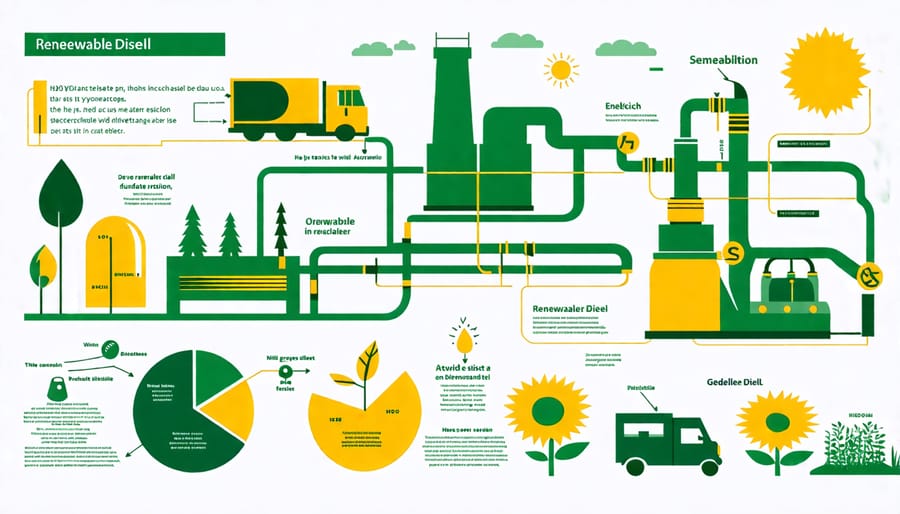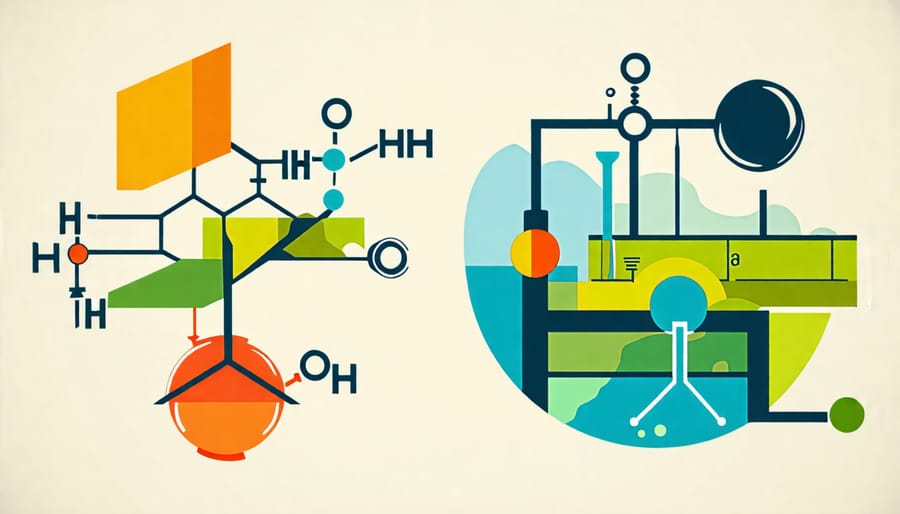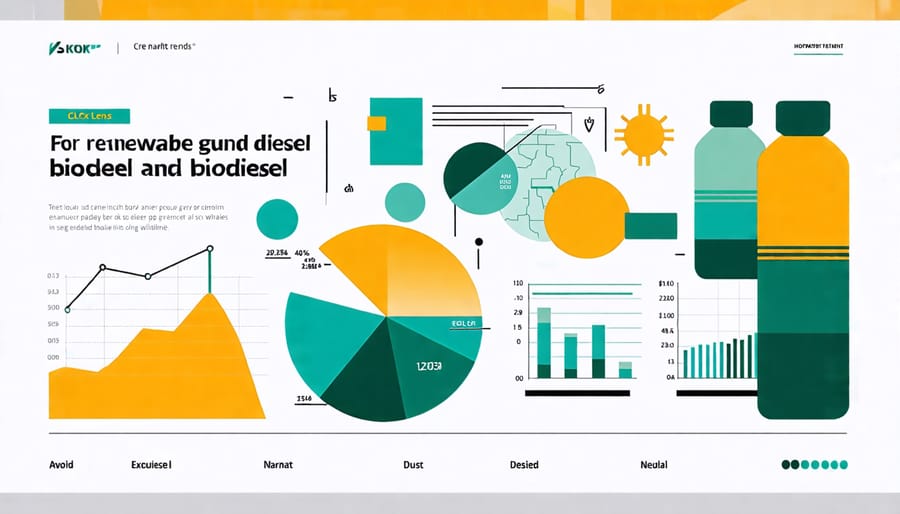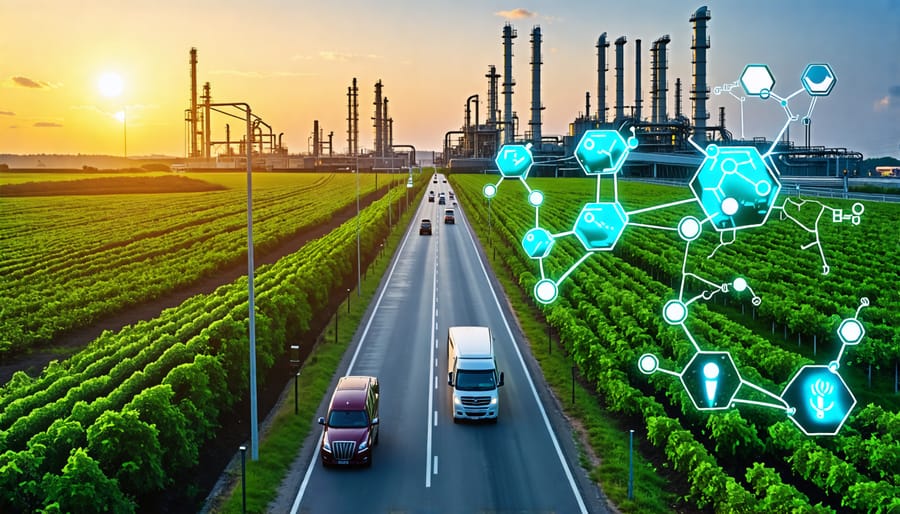Distinguish between renewable diesel and biodiesel by examining their production processes: renewable diesel is created through hydrotreating vegetable oils or animal fats, offering a chemically identical structure to petroleum diesel, while biodiesel is produced via transesterification, blending oils with alcohol to form fatty acid esters. Evaluate their performance: renewable diesel can seamlessly replace conventional diesel without adjustments to engines or infrastructure, boasting higher energy content and superior cold weather performance; biodiesel requires blending limitations and might demand engine modifications, depending on the blend. Analyze environmental impact and benefits: renewable diesel significantly cuts greenhouse gas emissions due to its cleaner burn and lifecycle advantages, whereas biodiesel also reduces carbon footprint but with limitations due to potential indirect land-use changes. Consider economic factors and policy support: both fuels benefit from governmental incentives and renewable fuel mandates, though renewable diesel’s compatibility and performance may drive greater market adoption.
Understanding Renewable Diesel
What is Renewable Diesel?
Renewable diesel is a sustainable alternative to traditional diesel, produced from organic and renewable sources such as plant oils, animal fats, and agricultural waste. Unlike traditional diesel, which is derived from crude oil, renewable diesel is chemically identical to petroleum-based diesel, allowing it to be used seamlessly in existing engines and infrastructure without modification. This drop-in fuel offers significant greenhouse gas emissions reductions, contributing to cleaner air and a healthier environment.
The production process of renewable diesel involves hydrotreating, which removes impurities and results in a fuel that is free from oxygen and has a longer shelf life than biodiesel. This process ensures that renewable diesel boasts high energy content and excellent performance characteristics, matching or even surpassing those of traditional diesel. Renewable diesel’s emergence in the market is a promising step toward achieving sustainable energy goals, appealing to environmentally conscious individuals seeking effective alternatives to fossil fuels.

How is Renewable Diesel Made?
Renewable diesel is crafted through a sophisticated process that transforms waste and renewable resources into a high-quality fuel. Unlike biodiesel, which relies on a chemical reaction with alcohol, renewable diesel is produced through a process called hydrotreating. This involves the use of hydrogen to remove impurities from fats, oils, and greases, often sourced from plants, animal fats, or even waste oils. The result is a cleaner-burning fuel that is chemically identical to petroleum diesel, making it a drop-in solution for existing diesel engines. This innovative approach not only reduces greenhouse gas emissions but also utilizes materials that might otherwise contribute to environmental waste.
Environmental Benefits
Renewable diesel offers significant environmental advantages over conventional fossil fuels. Primarily, it reduces greenhouse gas emissions by up to 80%, thus helping combat climate change. Unlike traditional diesel, which relies on finite resources, renewable diesel is produced from renewable feedstocks such as vegetable oils and animal fats, ensuring a sustainable supply chain. Its cleaner-burning properties lead to improved air quality by significantly lowering pollutants like nitrogen oxides and particulates. Moreover, using renewable diesel can help preserve biodiversity by lessening the need for crude oil extraction, offering a practical way to make your house greener and contribute to a healthier planet.
Exploring Biodiesel
What is Biodiesel?
Biodiesel is a renewable, biodegradable fuel made from a diverse mix of resources such as vegetable oils, animal fats, or recycled restaurant grease. As an alternative to conventional diesel, biodiesel offers an environmentally friendlier option. It’s produced through a chemical process called transesterification, which separates glycerin from fat or oil, leaving behind methyl esters (the chemical name for biodiesel) and glycerin, a byproduct often used in soaps. Unlike traditional diesel derived from petroleum, biodiesel can significantly reduce emissions of pollutants such as carbon monoxide, particulate matter, and unburned hydrocarbons, playing a crucial role in reducing greenhouse gases.
A notable distinction between biodiesel and conventional diesel lies in their chemical makeup. Biodiesel contains oxygen atoms, making it an oxygenated fuel, which can enhance combustion but also necessitates certain engine modifications for high concentrations like B100 (100% biodiesel). Nonetheless, biodiesel can easily be blended with conventional diesel (such as B20 – 20% biodiesel, 80% diesel), creating a seamless transition for existing engines in reducing carbon footprints without sacrificing performance.
Production and Sources of Biodiesel
Biodiesel is a renewable fuel produced through a process called transesterification, where natural oils or fats, such as soybean oil, animal fat, or recycled cooking grease, are chemically reacted with an alcohol, typically methanol, in the presence of a catalyst, usually sodium or potassium hydroxide. This process yields methyl esters, commonly known as biodiesel, and glycerin, a valuable byproduct. One of the appealing aspects of biodiesel production is its ability to utilize a diverse range of feedstocks, including waste oils, thus reducing environmental waste and promoting sustainability. Biodiesel can be used in existing diesel engines with little or no modification, making it a practical and readily adoptable green energy solution.
Environmentally Friendly Aspects
Biodiesel, derived from natural oils like soybean and canola, plays a significant role in enhancing environmental sustainability by reducing pollution and lowering the carbon footprint. As it integrates seamlessly with existing diesel engines, it offers a practical approach to minimize greenhouse gas emissions. Compared to conventional diesel, biodiesel emits fewer particulates, hydrocarbons, and sulfur, contributing to cleaner air and improved public health. The production process itself utilizes renewable, organic materials, making it an appealing option for those who support sustainable practices. Much like wind energy benefits, biodiesel promotes a cleaner and more sustainable future.
Key Differences Between Renewable Diesel and Biodiesel
Chemical and Physical Properties
Renewable diesel and biodiesel are both derived from biomass but differ significantly in their chemical and physical properties. Renewable diesel is produced through hydroprocessing, resulting in a fuel chemically similar to petro-diesel, with a hydrocarbon chain free from oxygen. This gives it superior cold weather performance and stability. Biodiesel, on the other hand, is made via transesterification, which results in fatty acid methyl esters (FAME) containing oxygen. This composition can lead to issues like higher cloud points and variable performance in cold conditions. While both fuels emit fewer pollutants than conventional diesel, renewable diesel’s chemical structure offers enhanced engine compatibility and efficiency.

Production and Refinement
Renewable diesel and biodiesel, both derived from organic materials, differ significantly in production and refinement processes. Renewable diesel is produced through a hydroprocessing technique that involves adding hydrogen to vegetable oils or animal fats, resulting in a product chemically identical to traditional diesel. This process, utilized by companies like Neste and Valero, ensures compatibility with existing diesel engines and infrastructure, offering smoother transitions for consumers and industries. In contrast, biodiesel is created through transesterification, a chemical reaction between vegetable oils or animal fats and alcohol. This results in fatty acid methyl esters (FAME), which require blending with petroleum diesel to match fuel standards. Both methods highlight innovative strides in sustainable energy, with renewable diesel providing distinct benefits in performance and compatibility, setting a hopeful tone for future advancements in clean energy.
Applications and Performance
Renewable diesel and biodiesel differ significantly in performance and applications. Renewable diesel, made from hydrogenated feedstocks like vegetable oils and animal fats, is chemically similar to fossil diesel. This allows it to seamlessly replace diesel in all modern engines, providing high performance and cleaner emissions. It’s particularly beneficial for heavy-duty transportation and fleet vehicles, offering lower maintenance costs and compatibility with existing infrastructure. Biodiesel, derived through transesterification of similar feedstocks, blends easily with fossil diesel. It’s primarily used in mixed forms like B20 (20% biodiesel, 80% diesel), reducing carbon footprints for light to medium-duty vehicles. Both fuels advance sustainable energy goals, yet renewable diesel offers broader application without blending constraints.
Economic and Policy Implications
Market Trends and Developments
The market for renewable diesel and biodiesel is experiencing significant growth as these sustainable fuels gain traction in reducing carbon emissions. Renewable diesel, produced through advanced technological processes, is witnessing a surge in adoption due to its compatibility with existing diesel engines and infrastructure, promoting a seamless transition for consumers. This fuel is especially popular in regions with stringent environmental policies, offering robust growth potential in coming years. Biodiesel, derived from more versatile feedstocks like vegetable oils and animal fats, continues to play a crucial role in blending mandates worldwide. Both fuels are significantly impacted by government incentives and the push for cleaner energy solutions, driving innovation and investment in the sector. With global energy transitions underway, both renewable diesel and biodiesel are poised for expansion, fostering an optimistic outlook for sustainable energy enthusiasts and policymakers.

Policy and Regulatory Environment
Governmental policies and regulations significantly shape the production and use of renewable diesel and biodiesel, promoting their adoption through incentives and standards. Federal mandates like the Renewable Fuel Standard in the United States require a specific volume of renewable fuels in transportation, encouraging investments in these alternatives. Tax credits and grants further bolster production efforts. The European Union’s Renewable Energy Directive sets targets for renewable energy use in transportation, impacting the market for both fuels. However, the policy landscape varies globally, affecting production capacity and market growth differently. Real-life case studies from countries leading in sustainability showcase how effective regulation can drive innovation and adoption in renewable diesel and biodiesel, leading to a cleaner, greener future.
Conclusion: The Road Ahead for Renewable Fuels
As we look to the future, renewable diesel and biodiesel are poised to significantly impact sustainable energy solutions. These fuels offer promising alternatives to traditional fossil fuels, with the potential to reduce greenhouse gas emissions and bolster energy security. Advances in production technologies have lowered renewable energy costs, making these fuels increasingly competitive in the market. However, challenges persist in scaling up production and distribution infrastructure to meet global demand.
Policy-makers play a crucial role in shaping an environment conducive to growth, through supportive regulations and incentives. Innovation remains key, as breakthroughs in feedstock utilization and refining processes could enhance efficiency and sustainability. To maintain momentum, collaboration across industries and governments is essential, fostering a holistic approach to energy transition. As awareness grows and technologies evolve, renewable diesel and biodiesel have the potential to drive the shift towards a cleaner, more sustainable energy landscape, benefiting both the environment and future generations.





